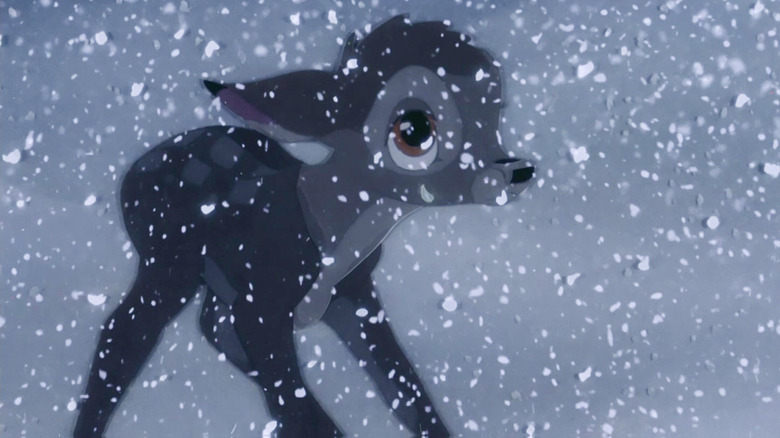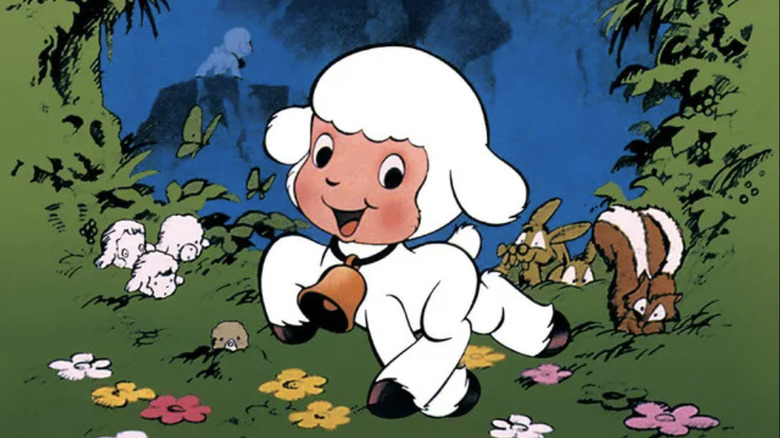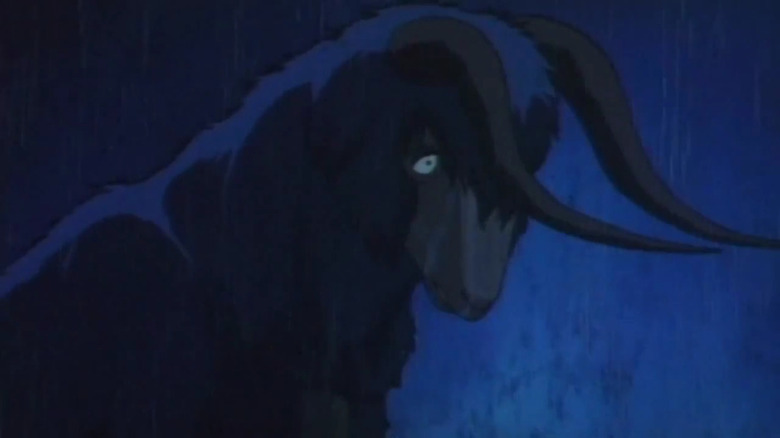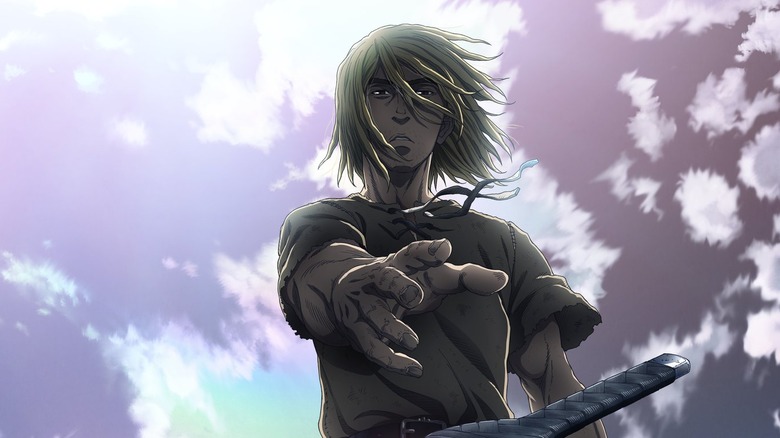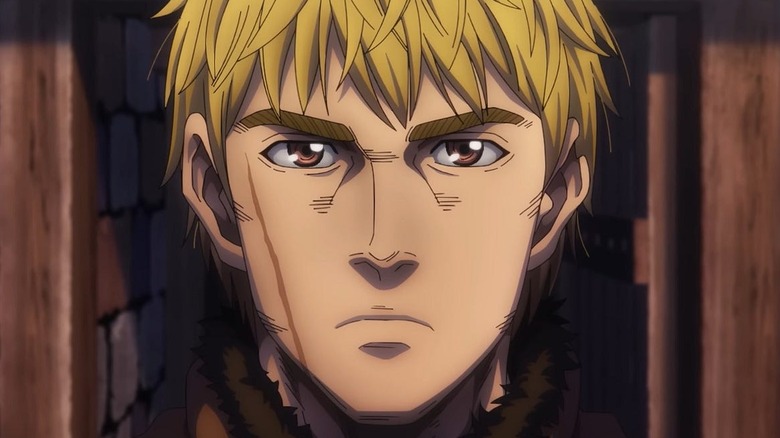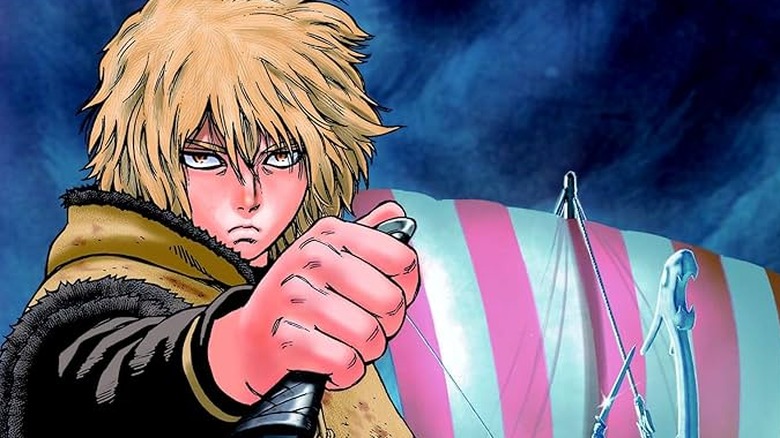Japan's Answer To Disney's Bambi Traumatized Children - And Inspired A Famous Anime
What's the most shocking moment in children's cinema? The death of Bambi's mother in Disney's 1942 classic titled, well, "Bambi," has to be up there. It's bloodless (she's shot offscreen by a hunter as she and Bambi run, then when Bambi calls her for her it's as if she evaporated), but more impactful because of that; the movie doesn't revel in the death, it's just a matter of life.
The animals in "Bambi" are less humanized than in later Disney pictures. They're drawn and live as real beasts; even what little dialogue there is in "Bambi" feels like a creative compromise. The incomprehensible force named Man snatching away Bambi's mother is the reality for deer dogged by hunters. Notice too how Bambi's mother dies in the winter; it's not just to make the scene extra moody, but because winter is the season of death. The film then jumps ahead to spring and when it reintroduces Bambi, he's grown into a young stag; his childhood ended that snowy day. It's all the unforgiving circle of life (a la "The Lion King," the other Disney movie with the heart-shattering death of an animal parent).
Steven Spielberg has said the death of Bambi's mother affected him, both as a storyteller and a person (it helped him realize that his parents would go one day). When Spielberg was producing the animated dinosaur picture "The Land Before Time," he pushed for the death of Littlefoot's mother, citing "Bambi" and the need to teach kids about death.
Another animated film that feels inspired by "Bambi" is 1978's "Ringing Bell," a Japanese short about an innocent lamb who loses everything. If you think "Bambi" is bad, "Ringing Bell" is worse!
Ringing Bell and Bambi
"Ringing Bell" is adapted from a picture book (about a dozen pages long) by the cartoonist Takashi Yanase. The movie, animated by studio Sanrio, bumps this up to 40+ minutes but keeps the story beats.
Chirin is an adventurous lamb who wears a bell while he frolics through grassy fields as sunny as he is (the Japanese title, "Chirin No Suzu," translates to "Chirin's Bell"). However, his mother warns him not to stray from the farm or he'll meet the Wolf that lives nearby. Sounds like a harmless kids movie, right? The film's posters reinforce this, showing a cheery Chirin front and center. An untrained (American) eye could even look at "Ringing Bell" packaging and believe the movie was made by Disney itself.
Then the Wolf comes prowling and Chirin's mother dies saving him. It's even sadder than "Bambi" and more akin to "The Lion King" because Chirin slowly prods his mother's body and breaks down as he realizes why she won't wake up. Chirin subsequently seeks revenge on the Wolf — and, obviously, fails. So then he changes his mind; he hates being a weak sheep and wants the Wolf to train him. It takes some convincing, but the Wolf molds Chirin into a beast like him. When the Wolf orders Chirin to kill the other sheep, Chirin remembers his mother's death and finally takes his revenge.
The curse of vengeance
Chirin realizes too late that the Wolf was the only family he had left and the other sheep cast him out. The narrator closes the movie like it's a ghost story, saying the only trace of Chirin heard after that day was the sound of his bell in the wind. "Bambi" introduces children to the idea of death and how accepting it is part of growing up. "Ringing Bell" shows them what can happen if you can't move past death.
"Ringing Bell" was distributed in the U.S. in 1983 on home media cassettes. The English dub has Barbara Goodson, the future voice of Rita Repulsa on "Power Rangers," play the young Chirin, while Gregg Berger, the voice of the Dinobot Grimlock from "Transformers," plays Chirin's older, darker self.
Still, the movie is known better in its home country. One fan is mangaka Makoto Yukimura, author of the Viking historical manga "Vinland Saga." In a 2009 interview on the now defunct site manganohi.com, Yukimura recounted the story of "Ringing Bell" and said he wanted to show his own son the movie: "[The story] doesn't have to make sense right away. I want to give them something to chew on over a long period of time."
To be clear, "Ringing Bell" is a children's movie. Yes, it's dark, violent, and ends without a silver lining. However, it works to introduce its young audience to these dark themes. That's why it tells its story with animal archetypes that children will understand.
Yukimura, though, has no such age restrictions on his writing; "Vinland Saga" is a seinen series (Japanese demographic meaning "adult men"). It's also basically "Ringing Bell" told in a different setting.
Vinland Saga is Ringing Bell with Vikings
"Vinland Saga" follows a teenage warrior named Thorfinn. He's fighting in a band of Vikings led by the charismatic Askeladd, but Thorfinn isn't in it for the plunder; he wants to earn a duel with Askeladd. When Thorfinn was about five years old, his father — Thors — died fighting Askeladd's men, trading his life for Thorfinn's. Thorfinn stowed away on Askeladd's boat and has spent a decade single-mindedly focused on defeating him. In an unusual but extremely compelling twist on a revenge quest, Askeladd took Thorfinn under his wing and promised him his revenge if he worked for it.
Thorfinn is Chirin; a once innocent boy who lost his parent and became a dangerous, but all too naïve, murderer. Askeladd is the Wolf; an adoptive father who is only so because they killed their ward's true parent and stole a child's chance at a happy life. Yukimura explained in an interview with anime YouTuber Garnt:
"I gave Askeladd the role of raising Thorfinn in the place of his dead father [...] So Thorfinn learns everything from Askeladd. He even learns the definition of violence through Askeladd. That's why Askeladd is cold and brutal. The more cold Askeladd is, the better. But at the same time, he is also a father."
Chirin ultimately realizes the Wolf is really the one who raised him and calls him his father, but Thorfinn never arrives at understanding Askeladd in that way (not while the latter is still alive, at least). Since "Vinland Saga" follows human characters through a famously brutal period of history, it has no bait-and-switch of cuteness like "Ringing Bell" does.
And yet, the darker, gorier story is the more optimistic one, for "Vinland Saga" is truthfully an anti-violence epic.
Thorfinn's journey contrasted to Chirin's
"Ringing Bell" ends with a lonely Chirin calling out for the Wolf. If "Vinland Saga" was the same, it would end with Thorfinn finally killing Askeladd and sitting alone, realizing his revenge quest hollowed out his soul and he has no one left to turn to. But instead, the show goes on; its first arc (adapted across the 24 episodes of the anime's first season) concludes with a chapter titled, "End of the Prologue." That's a gutsy writing move if I've ever seen one; an author hooks readers then reveals, 50+ chapters in, that this was all prelude for the real story.
That real story is about Thorfinn's atonement. He fails to kill Askeladd, who dies at another character's hands. As Thorfinn's decade-long dream fades away before his eyes, he starts to realize what Askeladd meant to him (the frame of Thorfinn holding a dead Askeladd has the same white background as when Thorfinn hugged the dying Thors). With his last words, Askeladd asks if Thorfinn's thought about what his life will mean "long after I've rotted away," and urges him to become a better man than himself.
The second arc of "Vinland Saga" shifts to a meditative story; a depressed Thorfinn sleepwalks through life as a farmhand. Without thoughts of revenge drowning out the screams of the dead, he's become a haunted shell. His character arc becomes him realizing his responsibility to his father and his victims; to atone, he must build a better world. He chooses to create that place "somewhere that's not here" — across the sea in unsettled Vinland (the place we call Newfoundland these days).
That's why the story is called "Vinland Saga" — Vinland refers not to just the physical place but a dream of land free from violence.
Finding forgiveness in Vinland
Only the first half of "Vinland Saga" has been adapted into an anime so far. If/when seasons 3 and then 4 arrive to adapt the next 100 chapters published, the one character I'm most excited to see animated is Hild. Who is she? Thorfinn's greatest challenge yet.
Hild is a young huntswoman whom Thorfinn's crew meets while she's trapping bears in Norway. Years back, Askeladd's band attacked her village; Thorfinn personally killed Hild's father. She wants to kill him and Thorfinn's friends only convince her to delay her vengeance; she'll let Thorfinn balance the scales and then take his life to complete his atonement. In the meantime, she joins the crew to keep an eye on Thorfinn.
If you don't get it, Hild is to Thorfinn what he was to Askeladd. He's far more understanding of her pain though; she reminds him of his burden when his dreams can't. This pays off 70 chapters later in one of the most beautiful moments I've ever read in a comic.
In the series' last arc, the gang makes it to Vinland to start their new lives. In chapter 191, Hild chooses to forgive Thorfinn: "You went to the ends of the Earth to release me from the curse of vengeance. You fought long and hard... you are a true warrior." The whole scene reminds me of a great line from "Buffy The Vampire Slayer" — "To forgive is an act of compassion."
"Bambi" is a film that introduces children to death with sensitivity, while "Ringing Bell" shows that sometimes, your decisions preclude a happy ending. While kids definitely won't appreciate the whole depth of "Vinland Saga," it's got a message all ages should hear: no matter what you've done, you have to keep on living.
